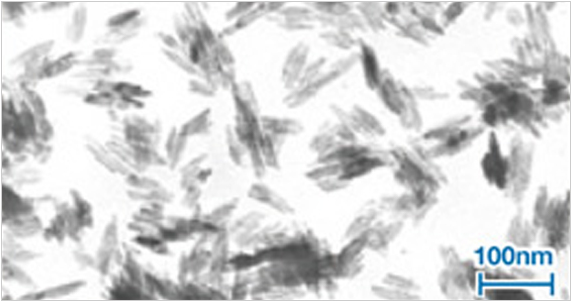CATALYSTS
A diverse product line featuring catalysts to support environmental remediation and catalysts used in essential daily items.
De-NOx catalysts and de-DXN catalysts break down nitrogen oxides and dioxin generated by thermal power plants and waste incineration facilities. Hydrogenation catalysts (nickel/copper catalysts) are used to produce raw materials used in margarine, shampoo, adhesives, and optical films. Polyester polymerization catalysts are used to produce raw materials used in polyester fibers, PET bottles, and PET films.
Sakai Chemical Group’s Strengths
- Sakai Chemical Industry is the only company in the world capable of integrated production of De-NOx catalysts starting from raw materials, from titanium dixoide until catalyst production. This allows us great advantages in maintaining high quality and promoting technical innovation.
- We leverage our strengths to respond to the sophisticated needs of our clients, and to continously improve our products and develop new products.
- We have long-term relationships with many clients to provide hydrogenation catalysts and other catalysts, and we apply wisdom gained through experience to expand our work to cover new clients and new products.
PRODUCT LIST
De-NOx Catalysts/ De-DXN Catalysts
■Overview
De-NOx catalysts reduce and eliminate nitrogen oxide generated by power plants and waste incineration. De-DXNs catalysts break down and eliminate dioxins generated by waste incineration. Both of these can assist with environmental remediation, and they are expected to gain increasing attention in the near future. Sakai Chemical Industry manufactures titanium dioxide, the primary raw ingredient of these catalysts. We are the only company in the world with the integrated technology capable of covering every stage from raw materials until final products like catalysts. We are confident that we have products to match every need of our clients, and we welcome new inquiries.
Sakai Chemical Industry’s De-NOx Catalyst Technology
・We were awarded an Important Technology Research and Development Fund Grant by METI, followed by reconignition of our successful results.
・We were awarded the 33rd Chemical Technology Prize by the Kinki Chemical Society.
・We were awareded the 1989 Technology Prize by the Catalysis Society of Japan for “development of ammonia de-Nox catalysts for dry flue gas”.
Honeycomb catalyst dimension list
Nominal pitch | unit | 7.4 | 6.0 | 5.0 | 4.2 | 3.7 | 3.3 | 3.0 | 2.5 |
External diameter | mm | 150 | 150 | 150 | 150 | 150 | 150 | 150 | 150 |
Cell number | cell×cell | 20×20 | 25×25 | 30×30 | 35×35 | 40×40 | 45×45 | 50×50 | 60×60 |
Opening diameter | mm | 6.23 | 4.98 | 4.13 | 3.65 | 3.19 | 2.78 | 2.56 | 2.06 |
Inner wall thickness | mm | 1.15 | 0.90 | 0.80 | 0.58 | 0.50 | 0.50 | 0.40 | 0.40 |
Opening ratio | % | 69.0 | 69.0 | 68.1 | 72.7 | 72.5 | 69.7 | 72.8 | 67.9 |
Contact area | m2/m3 | 442 | 553 | 660 | 795 | 908 | 1001 | 1137 | 1318 |

